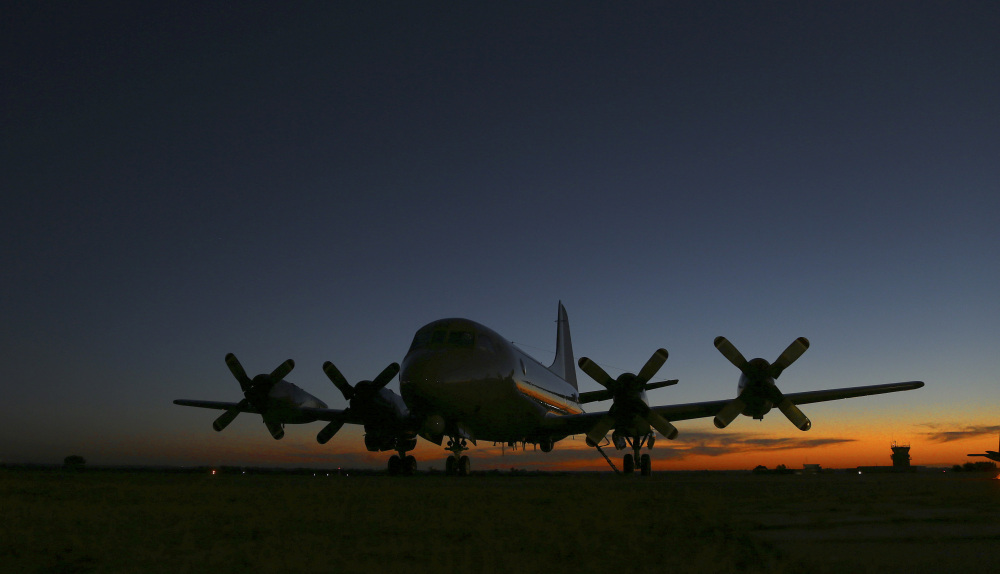PERTH, Australia — Malaysia’s prime minister on Thursday arrived at the Australian air force base serving as a hub for the search for Malaysia Airlines Flight 370, as the coordinator of the multinational search effort warned that the hunt for the jetliner was one of the most complicated searches in history.
Malaysian Prime Minister Najib Razak met with his Australian counterpart, Tony Abbott, at the base near the west coast city of Perth, and received a briefing by Angus Houston, the head of a joint agency coordinating the search.
“This is one of the most demanding and challenging search and rescue operations, or search and recovery operations, that I have ever seen — and I think probably one of the most complex operations of its nature that the world has ever seen,” Houston told Najib and Abbott.
Najib’s trip to Perth reinforces the reality that while Australia is coordinating the ocean search, the investigation into the tragedy ultimately remains Malaysia’s responsibility.
On Wednesday, however, officials warned that the investigation may never produce answers into why the Boeing 777 vanished on March 8 during a flight from Kuala Lumpur to Beijing. A frustrating dearth of information has plagued investigators from the moment the plane’s transponders, which make the plane visible to commercial radar, were shut off.
Military radar picked up the jet just under an hour later, on the other side of the Malay Peninsula. Authorities say that until then, its “movements were consistent with deliberate action by someone on the plane,” but have not ruled out anything, including mechanical error.
Police are investigating the pilots and crew for any evidence suggesting they may have hijacked or sabotaged the plane. The backgrounds of the passengers, two-thirds of whom were Chinese, have been checked by local and international investigators and nothing suspicious has been found.
The search for the plane began over the Gulf of Thailand and South China Sea, where the plane’s last communications were, and then shifted west to the Strait of Malacca. Experts then analyzed hourly satellite “handshakes” between the plane and a satellite and now believe it crashed somewhere in the southern Indian Ocean.
Search planes have spent more than two weeks scouring the remote waters for any sign of the plane’s wreckage. Houston has said there is no timeframe for ending the search, but acknowledged a new approach will eventually be needed if nothing turns up.
The Joint Agency Coordination Center, which oversees the search efforts, said up to eight planes and nine ships will take part in Thursday’s search over 223,000 square kilometers (86,000 square miles) of ocean, 1,680 kilometers (1,040 miles) — or about a 2½-hour flight — northwest of Perth. Weather was expected to be fair, though the southern section of the search zone could experience some showers.
Two British vessels, a nuclear-powered submarine with advanced underwater search capability, and the British Survey ship HMS Echo, had also joined the hunt, Houston said. The Ocean Shield, an Australian warship carrying a U.S. device that detects “pings” from the plane’s flight recorders, was en route.
With no other data available indicating where the plane went down, spotting wreckage is key to narrowing down the search area and ultimately finding the plane’s data recorders, which would provide a wealth of information about the condition the plane was flying under and the communications or sounds in the cockpit.
The data recorders emit a “ping” that can be detected by special equipment towed by a ship in the immediate vicinity. But the battery-powered recorders stop transmitting the pings about 30 days after a crash. Locating the data recorders and wreckage after that is possible, but it becomes an even more daunting task.
Send questions/comments to the editors.




Success. Please wait for the page to reload. If the page does not reload within 5 seconds, please refresh the page.
Enter your email and password to access comments.
Hi, to comment on stories you must . This profile is in addition to your subscription and website login.
Already have a commenting profile? .
Invalid username/password.
Please check your email to confirm and complete your registration.
Only subscribers are eligible to post comments. Please subscribe or login first for digital access. Here’s why.
Use the form below to reset your password. When you've submitted your account email, we will send an email with a reset code.